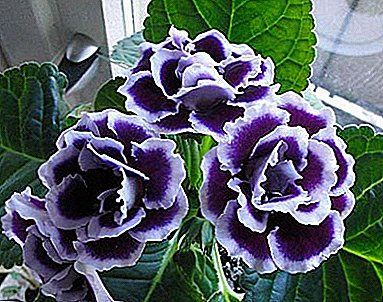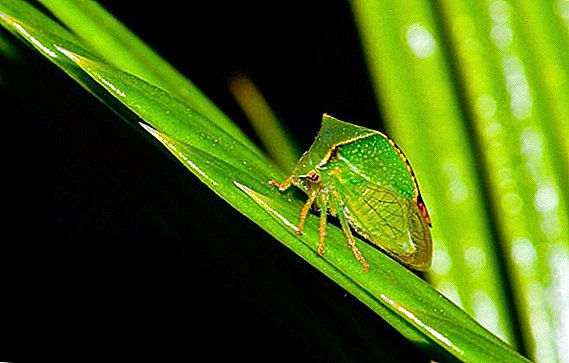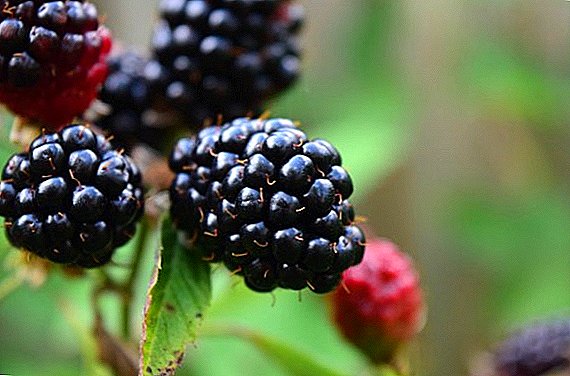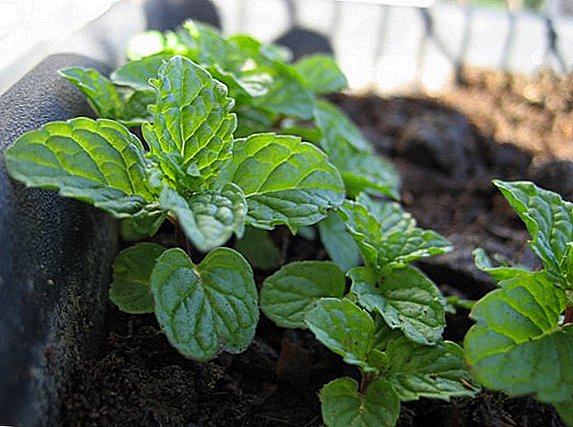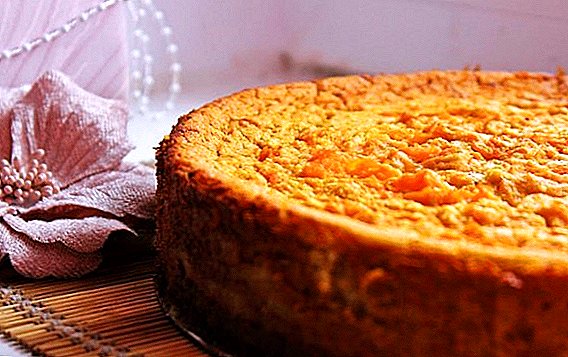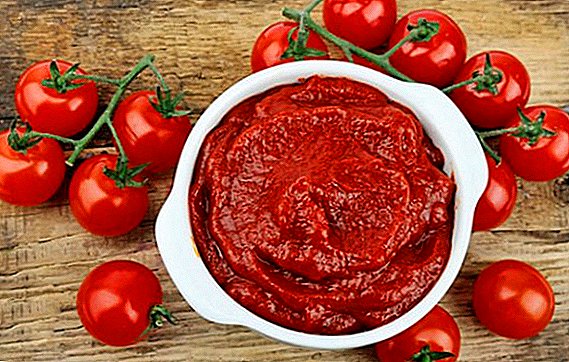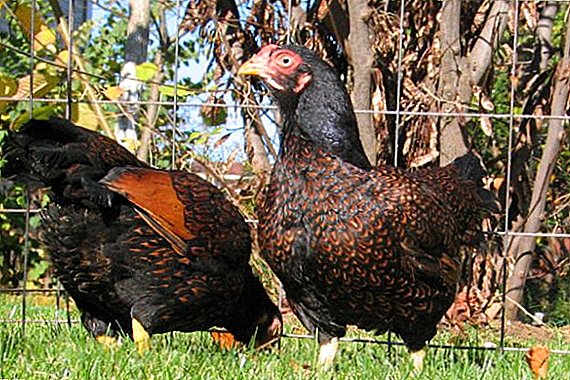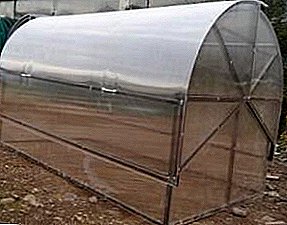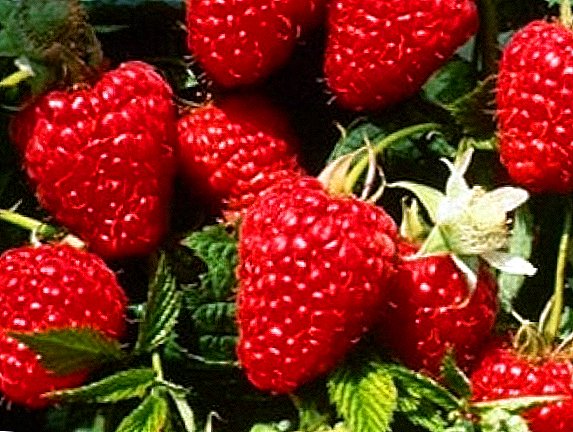 In recent years, a newly cultivated variety of large-fruited raspberries called "Himbo Top". Why is he so remarkable and is it worth paying attention to him? Let's try to figure it out.
In recent years, a newly cultivated variety of large-fruited raspberries called "Himbo Top". Why is he so remarkable and is it worth paying attention to him? Let's try to figure it out.
Selection
This variety was bred in Switzerland by Peter Heuenstein quite recently, in 2008. It is a hybrid of the Himbo Queen and Ott Bliss varieties. The world market is supplied by Lubera.
Did you know? In folk medicine, the dried fruits of raspberries are used as a diaphoretic. And its syrup is widely used in the manufacture of medicines as a flavoring additive in mixtures.
Characteristics and features
To begin with, we present you the Himbo Top raspberry characteristic.
Bushes
Bushes are considered tall, their height ranges from 1.8 to 2.2 m. For the grade "Himbo Top" is mandatory garter bushes. In the first year, saplings give 5-7 shoots, in subsequent years - from 10 to 12. The shrub has many fruit branches, their length is 70-80 cm and they are located along the entire height of the bush. 
Familiarize yourself with such varieties of repair raspberries such as: "Yellow Giant", "Heritage", "Atlant", "Gusar", "Caramel", and "Giant".
Berries
A distinctive feature of this variety are large berries of bright red color, their weight reaches 10 g. They have a conical shape, do not darken and do not crumble from the bushes after ripening. At the same time, they are easily broken from the branches. The taste is sweet, with a slight sourness, which is usually not inherent in remontant varieties, fragrant. The variety is considered late - fruiting begins in early August and lasts up to 8 weeks. 
Yield
Variety "Himbo Top" bred as high-yielding. One bush can give up to 5 kg of berries. On an industrial scale, with good agricultural technology, one hectare of Himbo Top raspberry usually harvests between 16 and 20 tons of crop.
Did you know? In nature, there is a kind of black raspberry, it was introduced to Europe from America in 1771. And in 1893 in Switzerland, it was crossed with red raspberries and got a variety with purple berries.
Disease resistance
Raspberry "Himbo Top" is resistant to many diseases, including late blight, root rot, fungal and bacterial infections. Shrubs can affect fusarium wilt and root cancer.
Frost resistance
But such an indicator as frost resistance is a minus of this variety. In winter, the bushes must be cut at the root. Also due to this feature, this variety is practically not grown in the northern regions.
How to choose seedlings when buying: tips
The first thing when choosing seedlings should be inspected buds and roots. There should be at least three buds at the base, it is they who will sprout after planting. The root system should be well developed, it increases the likelihood that the plant will take root in a new place. The ground part does not play a special role: seedlings can be sold almost without branches. 
Choosing the right place
The pledge of getting a good harvest largely depends on the choice of location for the raspberry device. Especially bushes demanding lighting and composition of the soil.
Lighting
For raspberries, choose well-lit areas. It is better to land from north to south or from the northeast to the southwest. In case of insufficient lighting, the bushes are more susceptible to diseases and damage by pests, and the quality of berries is also significantly reduced. Raspberries are often arranged along fences, but this is not the best option, with this arrangement, the bushes will not bear fruit in full force and will have a neglected appearance. 
Important! Because of the need for good nutrition, do not plant raspberries among fruit trees, as they will pull all the nutrients from the soil towards you, preventing the raspberry bushes from fully developing.
The soil
Raspberries grow well on slightly acidic soils rich in organic matter. The soil should be loose and nutritious, loamy or sandy, well drained. 
Preparatory work on the site
After the plot is selected, it must be carefully cleaned of weeds. The soil should be dug to the depth of the spade bayonet. Then humus (8-10 kg / sq. M) or manure (10-15 kg / sq. M), as well as potash fertilizers (30-40 g / sq. M) and superphosphate (50-60 g / sq. m).
Such training should be carried out in the fall, if the planting of raspberries is planned in the spring. If the landing will be autumn, the ground is prepared a month before the event.
Stepwise landing process
Due to the fact that this variety has long fruit-bearing branches, the recommended interval between rows is 2.5-3 m, and between the bushes they leave about 70 cm gaps. Raspberry Himbo Top are planted in trenches or separately dug holes up to 45 cm deep. about half a meter.
Important! The walls of the trench is recommended to strengthen the barrier, which is used as a polyethylene film.
They dig up places for planting in 2-3 weeks, put a layer of humus or compost (10 cm) at the bottom of the fossa, and fill it with a layer of earth (10 cm) on top. The seedling is placed in a hole and covered with fertile soil. When planting you need to ensure that the root neck remains above the ground. After all the bushes are planted, they must be watered abundantly. 
Competent care - the key to a good harvest
Further results depend on the proper care of the shrubs. Although remontant raspberry Himbo Top and not demanding to care, some of the recommendations still need to be respected.
Watering and mulching
Watering is carried out as the soil dries. Moisturize should be abundant, so that moisture has penetrated deep enough to the entire root system. Favorable effect on the development of shrubs mulching. For this procedure, apply straw, sawdust and pine needles. 
Top dressing
The first feeding is carried out after wintering. In the spring, nitrogen fertilizers should be applied to the soil (15-17 g / sq. M). Organics also contribute in the spring when loosening the soil. In the autumn, the bushes are fertilized with phosphorus-potassium fertilizer. On 1 square. m bring 125-145 g of superphosphate and 100 g of potassium sulphate. This feeding is carried out once every three years.
Preventive treatment
Preventive treatment against pests and diseases is carried out in the period of bud formation. It can be produced both by chemical preparations (Bordeaux liquid, copper sulphate, urea), and with the help of folk remedies (mustard, boiling water, herb extract). Copper sulfate avoids putrefactive diseases. To obtain a working solution in 5 liters of water, 50 g of this product must be dissolved. 
Important! During the growing season and active growth it is forbidden to process the bushes with copper sulfate, as it accumulates in the stems and then is transferred to the berries.
1% solution Bordeaux liquid avoids powdery mildew. Mustard and baking soda protect bushes from weevils. For spraying preparing a solution of 10 liters of water and 20 g of mustard or soda. Mustard solution must be infused for 12 hours. Mulching with needles also protects against rot and weevils.
Support
This tall variety needs a mandatory garter to the supports. For this purpose, temporary tapestries are constructed, the branches should be tied to them with a slight bias so that the tops do not break off under the weight of the berries. 
Pruning
They cut the raspberries just before wintering, this variety does not need pruning and pinching during the growing and fruiting season, like all remontant varieties. Remove worth only dried or weak shoots. 
Wintering
After harvesting, the fruiting shoots are pruned and the young shoots are thinned. The remaining branches are pressed to the ground and covered with branches or boards. When cultivated in regions with frosty winters, it is necessary to completely cut off the ground part and cover with film.
After reviewing the raspberry variety Khimbo Top, its description, yield from one bush and other virtues, the choice in its favor will be obvious.


